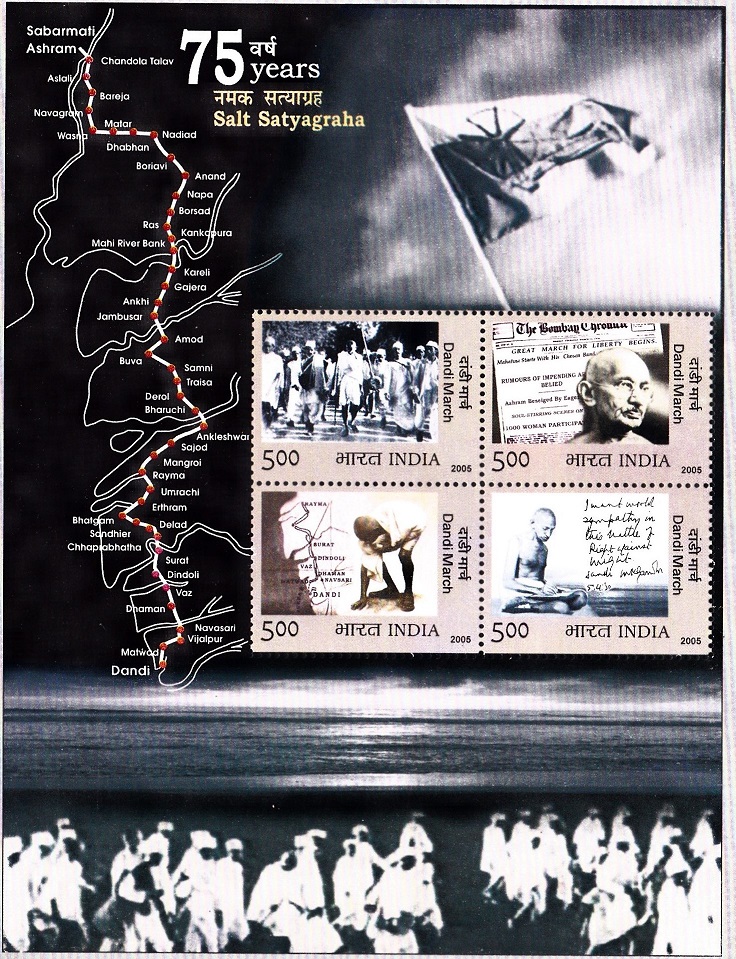
Salt Satyagraha
A Miniature Sheet consisting of 4 nos of postage stamps on the 75th Anniversary of the Salt Satyagraha (Dandi Yatra), an act of nonviolent civil disobedience in colonial India led by Mahatma Gandhi :
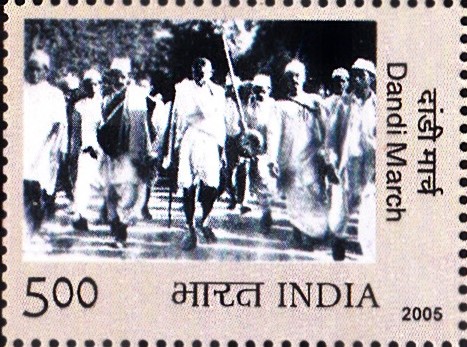
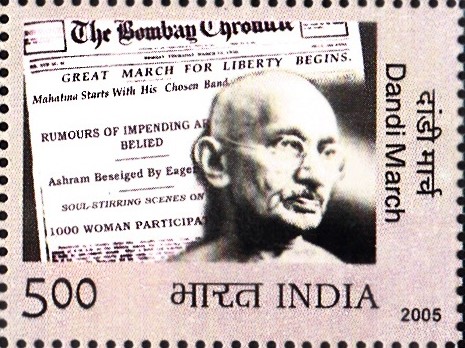
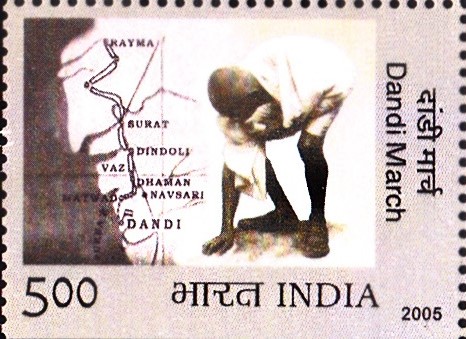
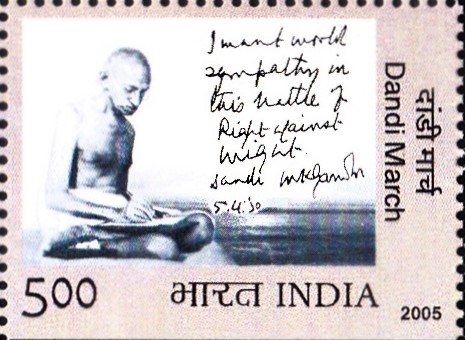
 Issued by India
Issued by India
Issued on Apr 5, 2005
Issued for : The Department of Posts joins the nation in commemorating the 75th anniversary of Dandi March and is privileged to issue this set of stamps on this occasion.
Design : This set of four stamps along with a miniature sheet tries to capture the historic moment and its varied facets. The first stamp (clockwise) catches a glimpse of the marchers, led by Mahatma Gandhi on the move. The second stamp shows Mahatma Gandhi while the headlines in “Bombay Chronicle” of March 13, 1930 announce the beginning of the “Great March for Liberty”. The third stamp shows lines written by Mahatma Gandhi on April 5th, 1930, “I want world sympathy in this battle of Right against the might”.
And finally, the last stamp, while showing the course traversed during the march, has Gandhiji picking up a lump of salt, a simple act, which forever become the powerful symbol of the Salt Satyagrah.
The miniature sheet extends the idea encapsulated in the stamps with artistic depictions of the route taken during the commemoration of 75 years of Dandi March, while showing the historical footage of the followers of Mahatma Gandhi.
Credits :
Stamp & FDC : Sankha Samanta
Cancellation : Alka Sharma
Type : Miniature Sheet, Mint Condition
Colour : Multicolour
Denomination : 500 Paise each
Print Quantity : 0.8 Million each
Miniature Sheets : 0.1 Million
Printing Process : Photogravure
Printer : India Security Press, Nashik
About :
- “As the march continued, as days broke into dawn and dawn ripened into dusk, we saw before our very eyes the history of the world changing. We saw the whole of India rising up with rekindled enthusiasm and faith.” – Sarojini Naidu
- Dandi March was one of the most inspiring chapters in the history of the Indian freedom struggle. Although every political act of Mahatma Gandhi was rich in symbolism, Dandi March was an outstanding example as it fired a people to believe collectively as a nation and to come together on a common platform.
- Mahatma Gandhi believed firmly in opposing all that was morally unjustifiable, and he would, in his own inimitable way, give expression to such a protest. His opposition to the Salt Tax imposed by the British, was thus elemental and yet effective in rousing the nation. Announcing the decision to launch the Salt Satyagraha, Gandhiji wrote to Lord Irwin, the Viceroy of India, “I regard this Tax (on salt) to be the most iniquitous of all from the poor man’s standpoint. As the independence movement is essentially for the poorest in the land, the beginning will be made with this evil.” The Salt Satyagraha was a masterstroke in political mobilization which also conclusively established that civil disobedience, as a means to achieve freedom was a viable political medium.
- On March 12, 1930, Gandhiji started the historic march from Sabarmati Ashram with 78 volunteers to Dandi on the Gujarat Coast. The 25-day long march through dusty and muddy tracks, sometimes through knee-deep waters, culminated on April 6, 1930. Gandhiji picked up a small lump of natural salt, thereby giving the signal to hundreds of thousands of people to similarly defy the law, since the British exercised a monopoly on the production and sale of salt. This was the beginning of the civil disobedience movement. Gandhiji had said in the Young India, “I know that the Salt Tax has to go and many other things with it.“
- Gandhiji’s politics was always dictated by a moral logic that went beyond the immediate political priority. To tax salt, a necessity of even the poorest of the poor, was to deprive the poor of his basic necessity.
- The symbolic struggle to control manufacture of salt soon become a larger statement on what freedom meant.
- The effects of the Salt Satyagraha were felt across the country. Thousands of followers were hauled into jail but it was only on May 4, 1930 that the Viceroy’s police arrested Gandhiji under a regulation of 1827.
- This period is to be considered the apex of Gandhiji’s political appeal, as the march mobilized many new followers from all sections of the Indian society and with this, the nation had unshackled itself and achieved a symbolic emancipation.
- Text : Based on material given by proponents.


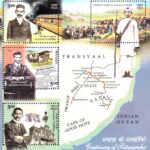
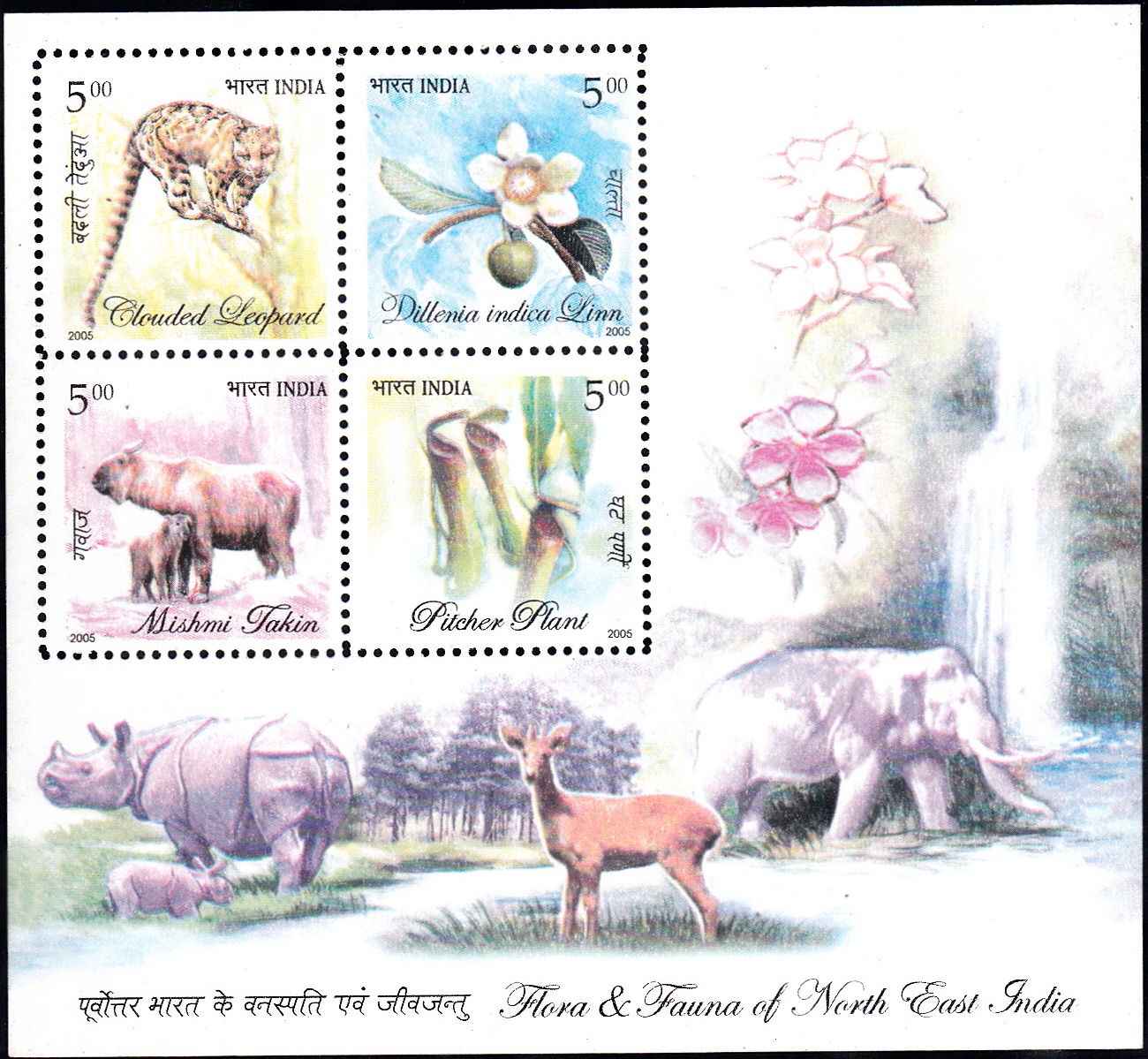
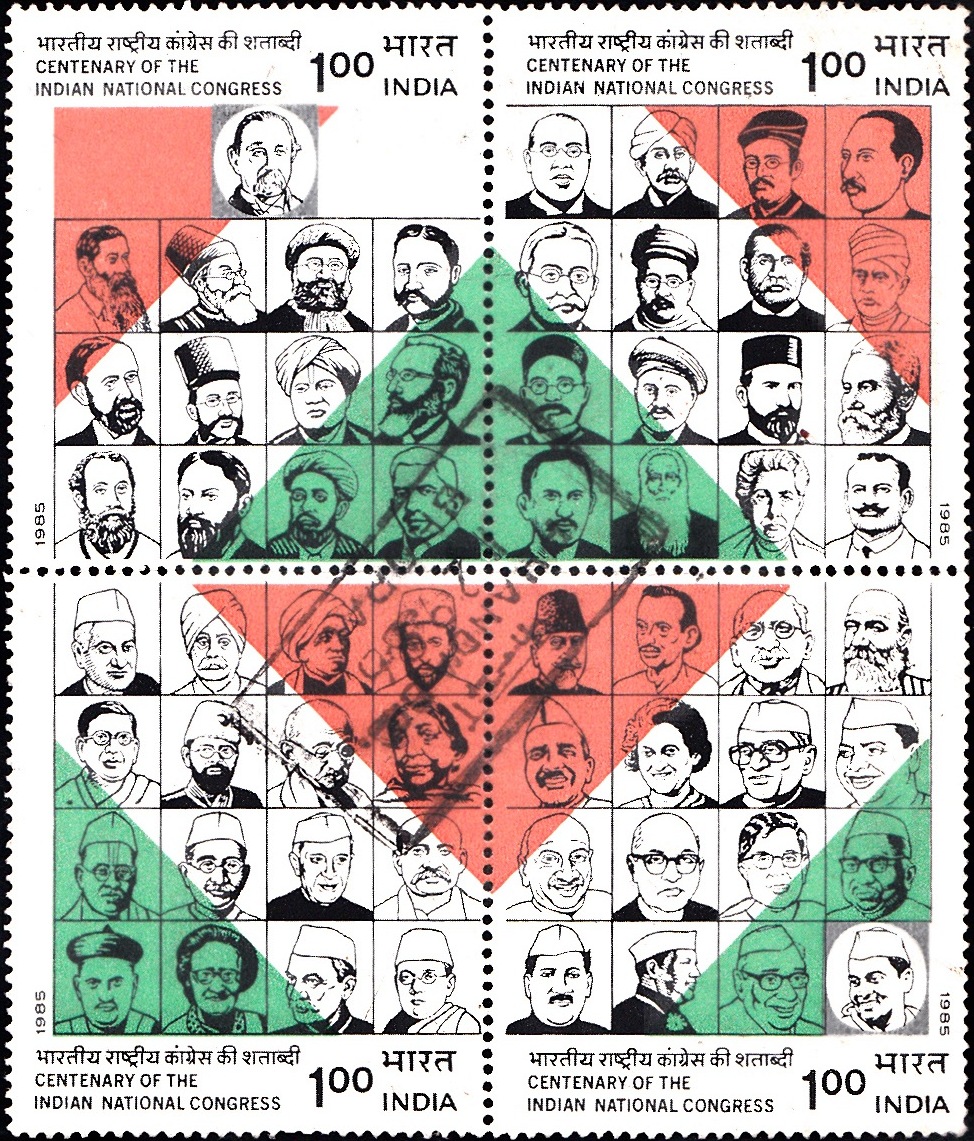
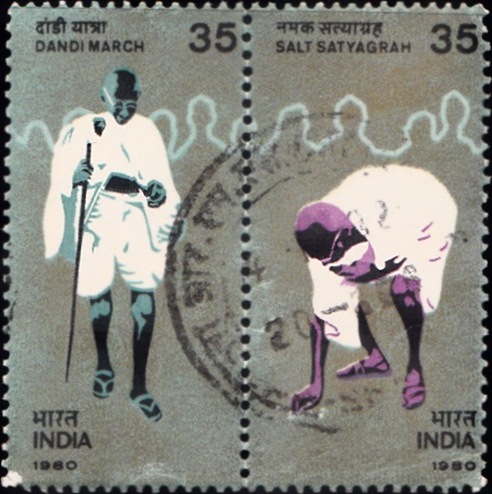
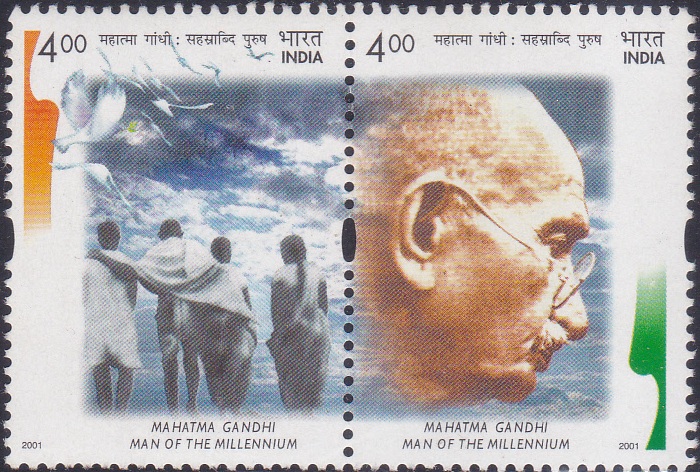
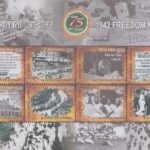
[…] 6th April 1930, during the Salt Satyagraha, Sambamurthy alongwith other leaders, marched to Chollangi village near Kakinada town and defied […]
[…] public life and took a vow to wear Khadi. He was imprisoned in 1931 for participating in the Namak Satyagrah (Salt Movement). In 1936 he was elected President of the Santhal Pargana District Congress […]
[…] against the Rowlatt Bill and joined the freedom struggle in 1921. He took a leading part in the Civil Disobedience Movement and was imprisoned in 1932. To stimulate Congress propaganda he started the daily newspaper […]
[…] in 1922 and the agitation against the Simon Commission in 1927. He actively participated in the Salt Satyagraha of 1930 also. In 1934 Baba Raghavdas effectively organised assistance for alleviating the miseries […]
[…] to Indian migrants from Tamilnadu, Munusamy and Janaki Ammal, she was deeply influenced by the Civil Disobedience Movement started by Mahatma Gandhi in South Africa and its spectacular effect on the Indian and other […]
[…] in Travancore or Kochi – being princely states – he went to Kozhikode to take part in the Salt Satyagraha in 1930. He was arrested and sent to Kanpur where he got inspired by historic stories of Bhagat […]
[…] Mahatma Gandhi’s Salt Satyagraha unfolded and evolved into a mass movement of an unprecedented scale, an ageing Motilal Nehru, […]
[…] the opportunity to do so presented itself only too soon. On 20th April, 1930 a civil disobedience movement commenced in the North-West Frontier Province under the leadership of Khan Abdul Ghaffar Khan and a […]
[…] movement and the Siswa Bazar episode which followed the calling off of Mahatma Gandhi’s Civil Disobedience Movement made him one of the mass leaders of the movement. He showed considerable political tact at the time […]
[…] In 1930, publication was closed in protest against the draconian anti-press law in the wake of the Salt Satyagraha. The following year, when the authorities ordered the press to blackout some of the fiery speeches […]
[…] imprisonment for a total period of about 5 years between 1930 and 1946 for his participation in the Salt Satyagraha (1930), Individual Satyagraha (1940) and Quit India Movement […]
[…] them to retreat by appealing to their good sense. He gave the lead to the Payyannur and Calicut salt satyagraha and was chosen as the first satyagrahi from Kerala in the individual satyagraha movement launched […]
[…] a mark as a fearless satyagrahi through his participation in the non-cooperation movement and the Salt Satyagraha. During his imprisonment at Asansol prison, in 1933, he came in close contact with prominent […]
[…] to the call of the Mahatma Gandhi for civil disobedience, Shri Bhim Sen Sachar joined hands with freedom fighters and was imprisoned from 1930-31. He […]
[…] the Secretary of the Foreign Cloth Boycott Committee in obedience to the wishes of Gandhiji. In the Salt Satyagraha of 1930, Jairamdas sustained a bullet wounded in his thigh in police firing at Karachi. Gandhiji […]
[…] After ten eventful years as a lawyer he quit his legal practice following Gandhiji‘s clarion call to boycott the law courts and British Educational Institutions. He took active part in the Non-Cooperation Movement. He was arrested on 2nd December 1921 along with Lala Lajpat Rai. On being released he taught in the National College set up by Lalaji. He held several important positions in the Congress Committee. He also took part in the Salt Satyagraha Movement. […]
[…] the national struggle for freedom participating in the Non-Cooperation Movement, Flag Satyagraha, Civil Disobedience Movement and Quit India […]
[…] of Azadi Ka Amrit Mahotsav commenced on 12th March 2021 from Sabarmati Ashram where a symbolic ‘Dandi Yatra’ was flagged off by the Hon’ble Prime Minister Shri Narendra Modi. This started a 75-week […]
[…] In 1930, when he was a student of ninth grade, he jumped into the freedom movement. When the Salt Satyagraha movement started, Durga Mall also started participating openly in local public meetings and […]
[…] The Kuka Movement made the people aware of their serfdom and bondage. It evoked the feelings of self respect and sacrifice for the country. Within a few years, the followers of the Kuka Movement increased manifold. They called for boycott of educational institutions of British and laws established by them. They were rigid in their clothing and wore only hand-spun white attire. The Kuka followers actively propagated the civil disobedience. […]
[…] a camp of Congress Seva Dal was held at Hatundi, Ajmer, a few days before the Salt Satyagraha, Durga Prasad Chaudhary was appointed as Captain of this Seva Dal, a position which he occupied […]
[…] of the British rulers, and he was forced to shift its publication to Jhansi. Mahatma Gandhi’s Civil Disobedience Movement inspired Puran Chand Gupta to think about a daily newspaper, and he started publishing Jagran from […]
[…] fighters of the day. He was member of D.C.C. (1939), member of P.C.C. (1934-47); took part in the Civil Disobedience Movement and the Quit India Movement. In 1930, he organized boycott of foreign cloth in Chandni Chowk […]
[…] then launched the salt Satyagraha in March 1930 and undertook the famous Salt March to Dandi from 12 March to 6 April, where, […]
[…] the Secretary of the Anti-untouchability Committee of the Indian National Congress. When the Salt Satyagraha movement was started by Gandhiji in 1930, he took a very active part in the movement. As a result […]
[…] salt satyagraha of the ‘thirties under the banner of Gandhiji was yet another memorable phase of our […]
[…] These remarkable qualities, coupled with an intense patriotism and love for the common man, offer a key to the transformation of a simple village child into one of the foremost leaders of modern India. He was born on September 10, 1887 in Khunt, a tiny village in District Almora, U.P. and brought up in an atmosphere far removed from the currents of national resurgence. He had a brilliant academic career, which he rounded off with a LL.B. degree from the Allahabad University in 1909. He joined the Bar at Naini Tal the same year and soon built up a flourishing practice. He, however, abandoned it in answer to Mahatma Gandhi‘s inspiring call for non-violent, non-cooperation and plunged into active politics in the early twenties. He became a Member of the U.P. Legislative Council in 1923 and was elected President of the U.P. Congress Committee in 1927. A year later he was active in organising demonstrations against the Simon Commission and received serious injuries in a police lathi charge. During the early thirties he was twice imprisoned for participating in the Civil Dis-obedience Movement. […]
[…] by the British Government. He was released after eight years and played an important role in ‘Namak Satyagrah’ at Garhpura. Under the Act of 1935, Sri Krishna Sinha formed his Cabinet Patna on 20th July, […]